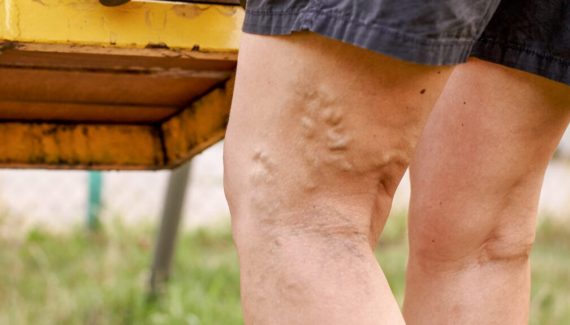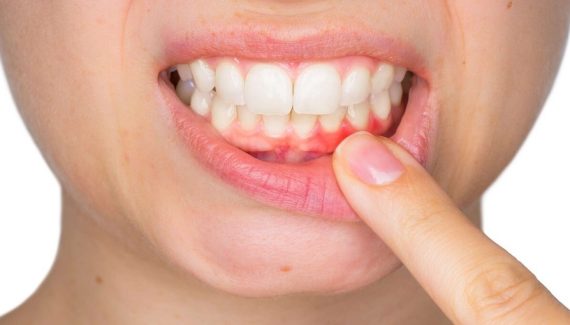Biapical thickening is a disease that causes the thickening of the lung lining. Your lung consists of two membranes, inner and outer. Usually, these membranes hold a small amount of fluid in between, but when the number of fluid increases, it causes pleural thickening. This disease is also referred to as diffuse pleural thickening (DPT).
It is a rare disease caused by breathing asbestos dust and fibers into the lungs. Your body is designed to filter all massive dust particles so that they don’t enter your lungs. However, when tiny dust particles find space to enter your lungs cavity, that causes biapical pleural thickening.

The disease usually doesn’t show any symptoms early, but you may feel shortness of breath or chest pain when it grows. The worst part is it doesn’t have a confirmed treatment. The damage cannot be reversed once it is done.
Although doctors take a few measures to treat the disease, they recommend you to quit smoking or some alternate medicines.
This article will help you understand every detail of the disease in an easy way. We have included causes, symptoms, treatment, and many more points for a complete overview of biapical pleural thickening.
Contents
What is Pleural Thickening?
The pleura is a delicate membrane lining of the lungs, and pleural thickening happens when the scar tissue thickens the pleura. There can be various reasons behind the thickening (we added more points to this in the article).
It’s not as simple as it sounds. Pleural thickening may form in different parts of the pleura. There can be three types, and doctors use imaging scans to examine the patient’s lungs and pleura:
➨ Visceral pleura: It’s a condition where the membrane directly covers the lung tissue.
➨ Pleural space: Referred to the space between two linings of pleura, the visceral and parietal pleura.
➨ Parietal pleura: is the lung’s outer membrane attached to the chest wall.
The imaging scans and X-rays help doctors identify the exact location of the impacted pleura, and the amount of thickening can help doctors determine the root cause and the type of disease.
Types of Biapical pleural thickening
The thickening of pleura can be distinguished between 5 types. Based on these exact types, doctors will recommend to you desired treatment. Each one of them is different and has a particular method of treatment.
1. Focal Pleural Thickening:
When the thickening happens in one or more areas of the pleura, it is referred to as focal pleural thickening. It can easily be identified using X-rays or CT scans.
2. Apical Pleural Thickening:
When the top-most area of your pleura thickens, it is referred are apical pleural thickening. In the early stages, this type is benign unless the pleura has reduced more than two centimeters.
3. Diffuse Pleural Thickening (DPT):
It’s another name for Biapical pleural thickening, where 50% or more of your left or right pleura thickens. Patients with more than 25% thickening may also be diagnosed with diffuse pleural thickening (DPT).
4. Mesothelioma-Specific Diffuse Pleural Thickening:
It is among the severe conditions that can lead to the collapse of the pleural space; when the pleural space thickens a lot, it cannot hold the membrane; it is referred to as Mesothelioma-specific diffuse pleural thickening.
5. Nodular Pleural Thickening:
This condition is referred to as the thickening that creates raised bump-like nodules from scar tissue. Again, one of the severest and alarming conditions.
These are the five types that doctors use to diagnose pleural thickening. Doctors use X-rays, CT scans, and other imaging scans to identify the exact type of pleural thickening you are facing and prescribe medicine. Some severe conditions may require hospitalization.
Causes of Biapical Pleural Thickening
The main reason behind it is Asbestos! It is a naturally occurring fibrous silicate mineral which is so tiny that we cannot see it through our naked eyes. It’s found in Attic and wall insulation produced containing vermiculite in vinyl floor tiles and the backing on vinyl sheet flooring, adhesives, roofing, and siding shingles.
Workers who work without protective gear can easily get exposed to asbestos dust. Those tiny particles can quickly penetrate the respiratory system into the alveoli, penetrate cell walls, and get into the pleura. If these tiny asbestos fibers get into your lungs and the pleura, it causes pleural thickening.
Mainly it happens because of the asbestos dust, but it’s not the only cause. Some other causes include
- Lung cancer
- Pleural effusions
- Pulmonary embolism
- Infection, including tuberculosis or pneumonia
- Inflammation
- Injury to the ribs or chest
- Empyema (build-up of pus in the pleural cavity)
- Haemothorax (excess blood in the pleural cavity)
The disease was more common in the 1990s when people were less aware of the severe causes. People working in fireproofing and insulating buildings, especially ceiling tiles, boilers, pipe insulation, and spray coating, are most prone to exposure.
Some typical jobs where people mostly face the problem of pleural thickening are.
- Plumbers, heating and ventilation workers
- Vehicle bodybuilders and repairers
- Motor mechanics
- Shipbuilding workers
- Sheet metal workers
- Energy plant workers
- Building inspectors
- Railway engineers
- Railway engineering workers
- Electricians and electrical fitters
Or any work that includes a lot of dust may expose you to the disease. However, it can easily be prevented by using a simple cloth mask at work.
Biapical pleural thickening could be transferred into your body even if you didn’t do any dust work. You may have symptoms in one or both of your lungs if you reside by a person who worked with asbestos during the job. The asbestos fibers are so tiny that they can easily be carried in clothes or other home materials. You may unknowingly inhale the particles and develop symptoms.
Symptoms of Biapical Pleural Thickening
The typical symptom that most people face is shortness of breath. You usually don’t feel anything during the early stages, but symptoms grow severe if no proper care is taken as the situation worsens. Some symptoms include
➨ You cannot hold your breath for a longer duration.
➨ Your chest will feel tighter than usual.
➨ Pain when exhaling or inhaling.
➨ Fatigue, fever, and cough.
➨ General pain increases in the chest after even mild physical exertion.
One clinical study found that 95% of patients said they had shortness of breath. 65% said they were moderately short of breath, and around 11% said they were severely short of breath.
Your lungs expand and collapse to pump oxygen. Pleural thickening covers the space that doesn’t allow your lungs to expand. It is the primary reason behind the shortening of breath. You have to use more force to inhale the oxygen that affects other organs of your body.
That’s why doctors recommend using external oxygen support to maintain the oxygen level to keep other organs safe.
We recommend you immediately contact the lung specialist if you face these symptoms. The damage done cannot be reversed, but you can save your lungs from more damage if you take care early.
Diagnosis of Biapical Pleural Thickening
Doctors use various methods to diagnose pleural thickening. Some standard techniques include X-rays and CT scans, but when these methods fail to find the root cause, other elaborated tests are conducted to know the exact type of thickening.
Doctors focus on this method to identify the disease to know its exact position. They also take the help of manual processes and some highly sophisticated imaging scans.
Chest X-ray:
A normal X-ray usually doesn’t show detailed imaging, but it’s good to understand the thickening at the very edges of the lung/pleura.
CT scan:
Computed tomography helps detect even the minute thickness at the very early stage of the disease. It can even see where the scar tissue is only a few millimeters thick. That’s why most doctors rely on this scan.
Physical examination:
Physicians use a stethoscope to hear the altered breathing sound to indicate pleural thickening.
Ultrasound:
Is rarely used because it can only detect the thickness when it’s more than one centimeter. By that time, most damage is already done.
Magnetic resonance imaging (MRI):
MRI scans are also used to detect the thickening of pleural walls, but it is rare and not as good as CT scans. It can be used under exceptional circumstances.
PET scan:
A positron emission tomography (PET) scan is another imaging test that can help reveal your tissues’ metabolic or biochemical function. It’s rarely used!
These are some standard tests that help doctors to identify the actual stage of pleural thickening you are at. They may do another test if they detect a sign of cancer or other condition.
An important thing to note is that some sources claim pleural thickening may only be valid if the patient’s lungs show blunting of the costophrenic angle. This is referred to as the gap under the base of the lowest part of your lung, where the diaphragm and the bottom of the ribs meet. Due to gravity, fluids build up in this gap under the lung. Then the fluid pushes one or both lungs up. This slowly blunts the costophrenic angle that reduces lung capacity, and you feel shortness of breath.
Treatment of Biapical Pleural Thickening
Most cases of biapical pleural thickening are asymptomatic and non-life-threatening and don’t require treatment. But, if the condition deteriorates and you feel shortness of breath, anxiety, and heavy exertion, doctors will recommend you quit smoking and help you with related medicines.
Unfortunately, pleural thickening cannot be cured. Once the damage is done, it cannot be reversed. Although it hardly shows any symptoms in most cases, it is essential to have this health condition diagnosed because it may cause more health problems or deteriorate the existing situation.
For treatment, doctors may recommend you to
- Quit smoking
- Improving diet and nutrition
- Exercising regularly
- Learning breathing strategies
- Some medicines
In addition, doctors regularly perform some tests to determine the health of your lungs so they can prescribe the treatment. They might ask you to hold your breath for at least 30 seconds. This is among the most common way to check breathlessness.
How Serious Can It Be?
In most cases, biapical pleural thickening is not severe. If it’s detected in the early stages, it is not fatal. Experts recommend that the condition can be benign (it’s non-cancerous, does not spread to other parts of the body, and does not invade nearby tissue), which does not require treatment.
However, It can also be a symptom of a more significant disease like mesothelioma or tuberculosis in some rare conditions. If a scan or examination detects pleural thickening, a doctor will surely test for all other underlying causes. It may start a massive disease; the earlier you know, the better.
Can Pleural Thickening Be Completely Cured?
The disease doesn’t have a cure, but most conditions are asymptomatic or have mild symptoms that do not require treatment.
However, if symptoms worsen, doctors may recommend other treatment options. For example, doctors may suggest pulmonary rehabilitation or breathing exercises to treat symptoms such as breathlessness.
Pleural thickening is not a severe health condition, but we recommend immediately contacting your doctor if you detect any symptoms. It may be the beginning of a severe disease like Cancer or Mesothelioma.
How Biapical Pleural Thickening Differs From Other Pleural Diseases?
We have discussed five types of thickening in this article. Biapical thickening happens when 50% or more of the left or right pleura is affected. It’s not a severe condition like Mesothelioma-specific diffuse pleural thickening. Also, it’s not as asymptomatic as Apical pleural thickening.
Biapical pleural thickening is among the most common disease that people face among all types we discussed. If you encounter shortness of breath or tightness in the chest, it is probably a sign of biapical pleural thickening.
How Does Pleural Thickening Relate to Mesothelioma?
Mesothelioma and pleural thickening are different diseases but are related to each other where most Pleural thickening cases are asymptomatic, while Mesothelioma can be life-threatening.
According to a study, pleural thickening is common among mesothelioma patients. In one retrospective study, the researchers reported that 88% of malignant pleural mesothelioma patients showed pleural thickening on CT scan reports.
However, mesothelioma is not common among pleural thickening patients. Some cases may develop symptoms, but it is pretty rare. If your pleural thickening deteriorates, you may have mesothelioma or another cancerous disease.
Prevention
The primary cause behind pleural thickening is tiny dust particles that enter your lungs, especially asbestos. Staying away from these materials will indeed prevent pleural thickening.
If your work demands to remain in dust, we recommend you use protective gear like a face mask to prevent those particles from entering your lungs. However, it’s not guaranteed prevention, and micro-pigments like 2.5 will somehow find their space to enter your lungs.
Moreover, if you think you are prone to be exposed to pleural thickening, then exercise these measures for prevention.
➨ Intake fresh air and do regular breathing exercises.
➨ Quit smoking if applicable.
➨ Make sure to use a mask when you go out in the dust.
Although pleural thickening is asymptomatic in most cases, you never know when it grows into a more significant disease. Also, you cannot reverse the damage as it doesn’t have a treatment. That’s why prevention is always better than cure.
FAQ’s
Q. What is the primary cause of pleural thickening?
Ans. Pleural thickening is mainly caused by inhaling tiny dust particles, especially asbestos. Smoking may deteriorate the condition, but studies show that it’s not the root cause.
Q. Is pleural thickening life-threatening?
Ans. No, it’s not! But the condition may worsen if you don’t take proper care of your health.
Q. Can pleural thickening be cured?
Ans. No, it cannot be cured. Doctors only use supportive measures to treat the illness. Surgery may be an option in some cases that improves breathing difficulty and other respiratory symptoms.
Conclusion
Biapical thickening is a non-life-threatening health condition that happens when the number of fluids in your pleural lining increases. The extra thickness prevents your lungs from expanding, and that’s why you feel shortness of breath or pain in the chest.
The disease has five types that focus on different parts of your lungs, but the most common is biapical pleural thickening. Most doctors will ask you to undergo a CT scan to identify your condition correctly.
The disease is asymptomatic and doesn’t require extra care or hospitalization during the early stages. But in a few rare cases, patients may develop cancerous symptoms or mesothelioma. Pleural thickening doesn’t have a cure. That’s why doctors use alternate measures like discontinued smoking or breathing exercises.
You can prevent yourself from infecting by using a good quality face mask at work.
Although the condition doesn’t sound serious, we recommend you immediately contact your doctor if you see symptoms like shortness of breath, pain in the chest, fatigue, fever, or excess cough. If your condition deteriorates, you may have a cancerous disease, T.B., mesothelioma, etc. The sooner you know, the better it is for you.
At last, take good care of yourself so that you don’t get exposed to the disease. If somehow you feel the symptoms, immediately contact your doctor for help.
Posts You May Like to Read:


